10 Popular Chip and Drink Pairings from Different Countries
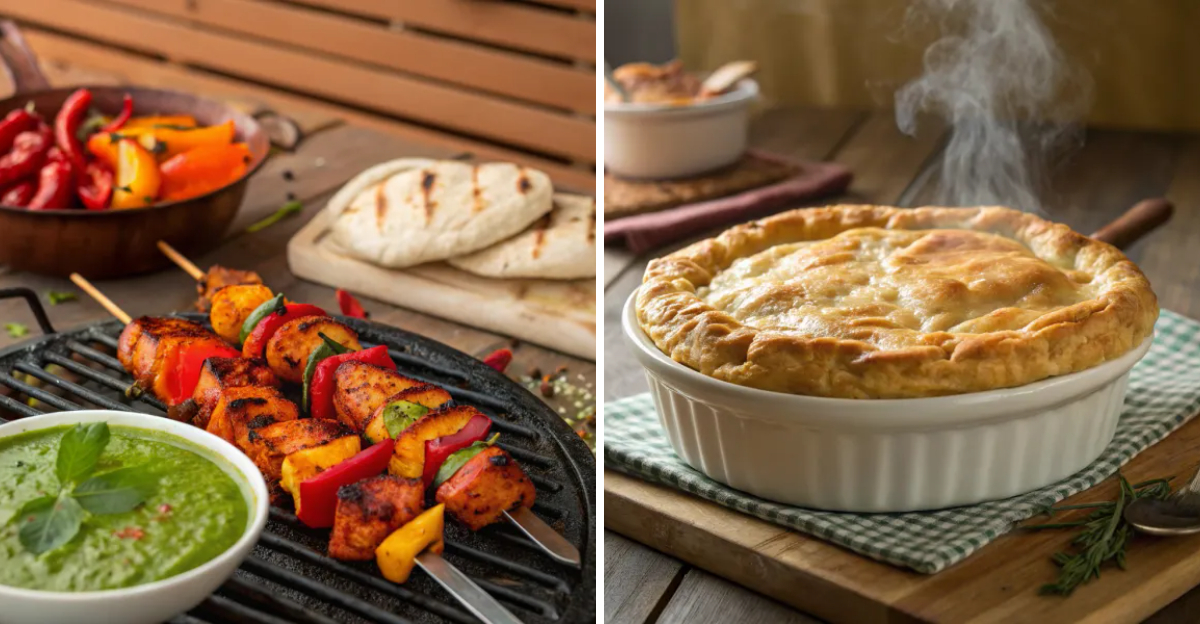
Food traditions often highlight the ways cultures connect. Snacking, in particular, showcases diverse preferences for complementary flavors and textures. Across the globe, specific combinations of chips and drinks are favored, reflecting local tastes and customs. These pairings range from known combinations, passed down through families, to more contemporary pairings that may seem unconventional. The choices offer insights into regional culinary practices and cultural preferences.
1. Seaweed Chips and Barley Tea from South Korea
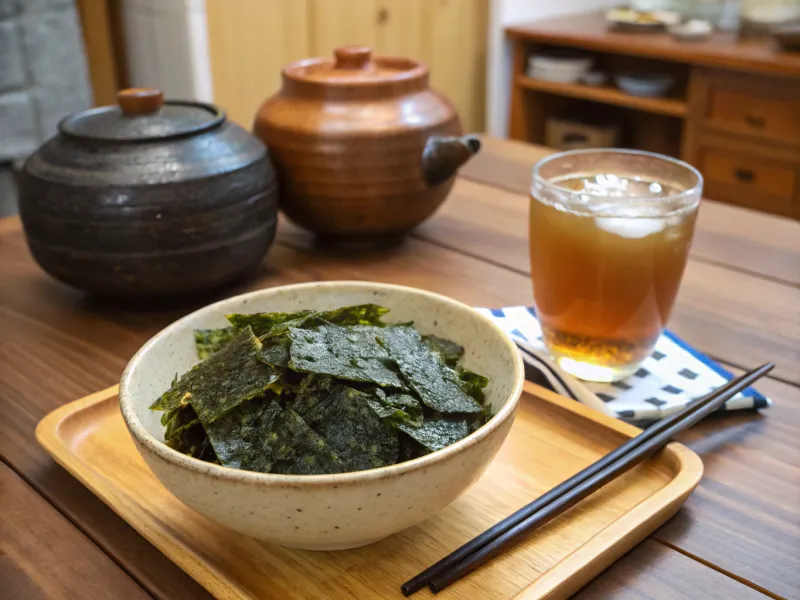
Korean families have been enjoying this combination for decades, especially during afternoon study sessions. Seaweed chips offer a salty, ocean flavor that tastes like the sea itself. Barley tea, called mugicha, provides a nutty and refreshing contrast to the saltiness. This drink is served cold and helps cool down your taste. Students often munch on this pairing while doing homework because both snacks are light and won’t make them feel too full. The combination represents Korea’s connection to both land and sea ingredients.
2. Cassava Chips and Tamarind Juice from Nigeria
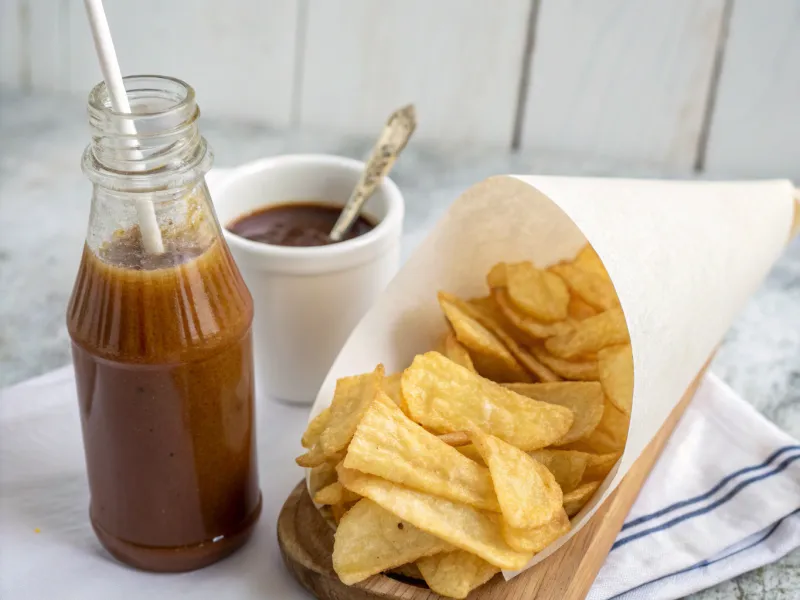
West African markets buzz with vendors selling this combination to hungry shoppers. Cassava chips are thick, brown slices that crunch loudly when you eat them, made from the cassava root plant. Tamarind juice brings a sweet and sour flavor. The brown drink looks muddy but tastes like a tropical fruit explosion that balances the plain cassava taste. Street food sellers often serve this pairing in small plastic bags, making it easy to eat while walking. This combination shows how Nigerians turn simple root vegetables into fulfilling snacks.
3. Plantain Chips and Coconut Water from Philippines
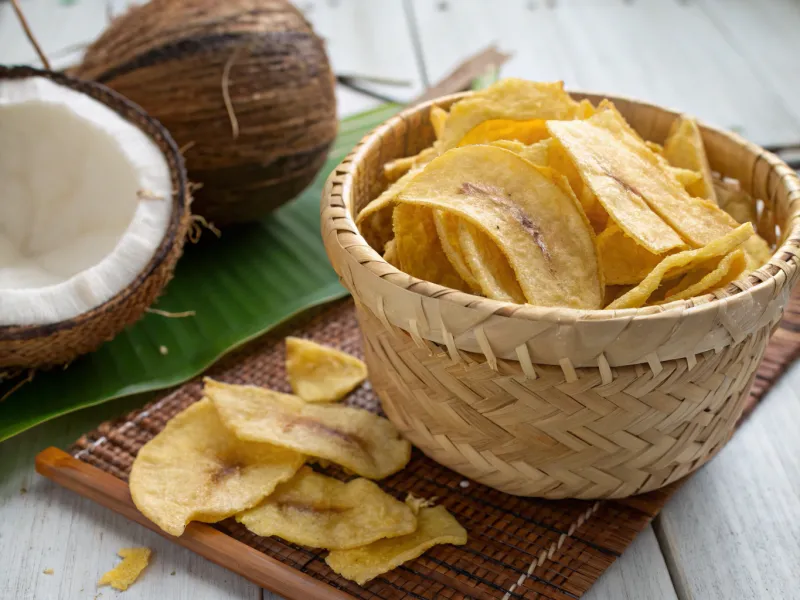
Filipino beach vendors walk along sandy shores carrying this tropical combination in colorful baskets. Plantain chips are thin, crispy slices that taste slightly sweet and salty at the same time. Fresh coconut water comes straight from young green coconuts, providing natural electrolytes and a clean, refreshing taste. The clear liquid helps wash down the oily chips while keeping you hydrated in the hot sun. Families often pack this pairing for beach trips because both items grow naturally on Philippine islands. The combination represents the country’s abundant tropical resources and laid back island lifestyle.
4. Potato Chips and Mint Lemonade from India

Indian street corners come alive with this refreshing combination during scorching summer months. Regular potato chips get spiced up with masala seasoning that includes cumin, coriander, and red chili powder. Mint lemonade, called nimbu paani, contains fresh mint leaves, lemon juice, and a pinch of black salt. The green drink cools your tongue after eating spicy chips and helps digest the fried snack. Vendors serve this pairing in small glasses and paper cones, making it affordable for students and workers. The combination shows how Indians use spices and herbs to turn simple ingredients into flavorful experiences.
5. Yuca Chips and Chicha Morada from Peru
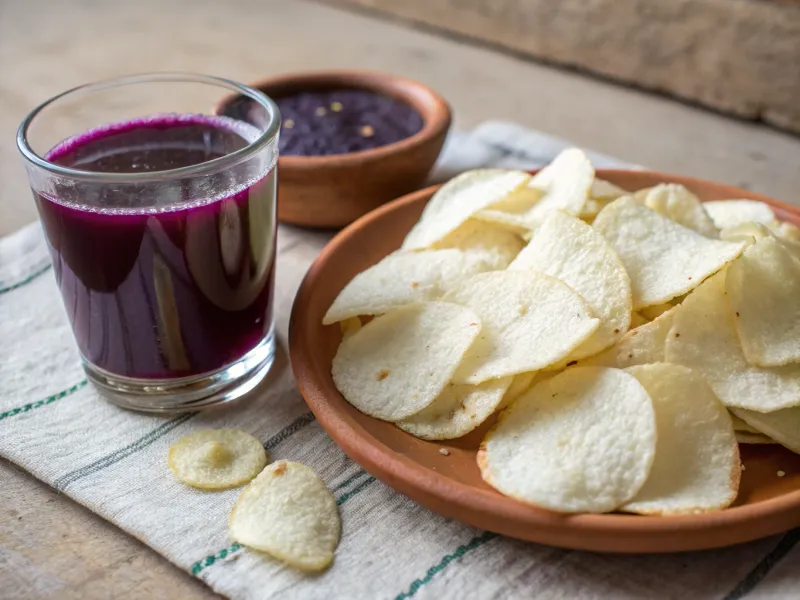
Peruvian markets showcase this colorful combination that represents ancient Inca traditions mixed with modern snacking. Yuca chips are thick, white slices made from the yuca root that taste similar to potato chips but denser. Chicha morada is a purple drink made from purple corn, pineapple, and cinnamon that tastes fruity and slightly spiced. The bright purple color comes from the special corn that has been grown in Peru for thousands of years. Families prepare this pairing during community gatherings because both ingredients connect them to their ancestors. The combination shows how Peruvians honor their heritage through daily snacking choices.
6. Rice Crackers and Green Tea from Japan
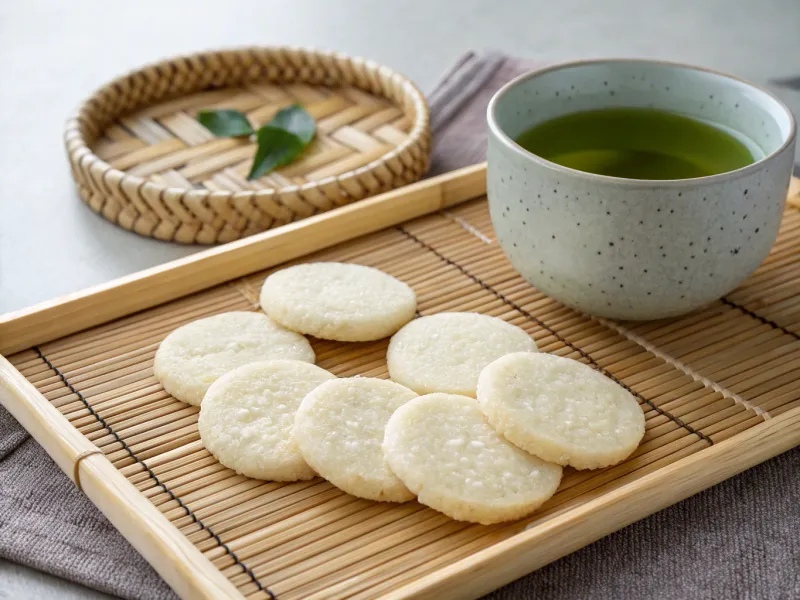
Japanese tea ceremonies often include this simple yet elegant combination that represents mindfulness and balance. Rice crackers, called senbei, are round, flat discs with a light, airy texture and subtle rice flavor. Green tea, or matcha, has a grassy, slightly bitter taste that helps cleanse your palate between bites. The hot tea also helps soften the crackers slightly, making them easier to chew. Office workers commonly enjoy this pairing during afternoon breaks because it provides energy without being too heavy. The combination demonstrates Japan’s philosophy of finding harmony between contrasting flavors and textures in food.
7. Corn Chips and Hibiscus Tea from Mexico
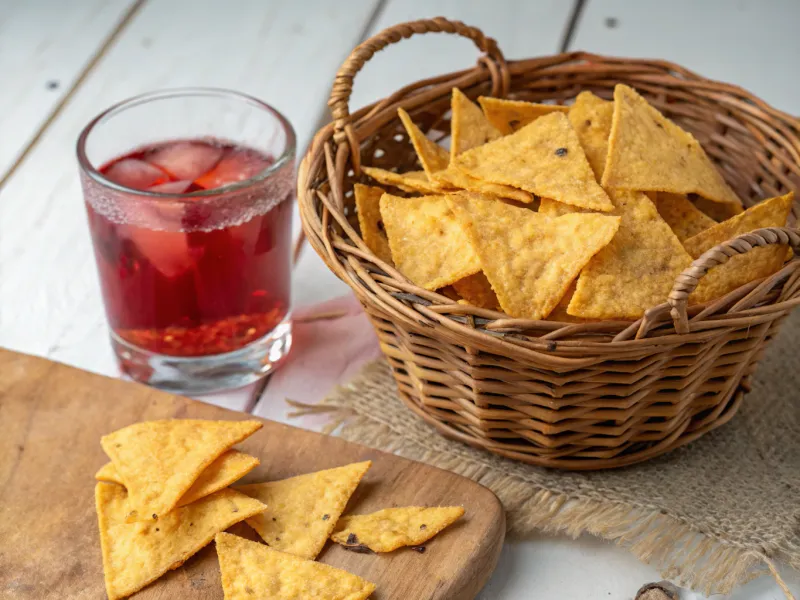
Mexican families gather around this combination during hot afternoons when regular snacks feel too heavy. Corn chips are triangular, golden pieces made from ground corn that taste earthy and slightly sweet. Hibiscus tea, called agua de jamaica, is a bright red drink that tastes tart and floral like cranberry juice. The cold tea helps cool down after eating salty corn chips. Street vendors sell this pairing from colorful carts, serving the tea in plastic cups with lots of ice. The combination shows how Mexicans use native plants and grains to make refreshing snacks that work well in warm weather.
8. Sweet Potato Chips and Rooibos Tea from South Africa
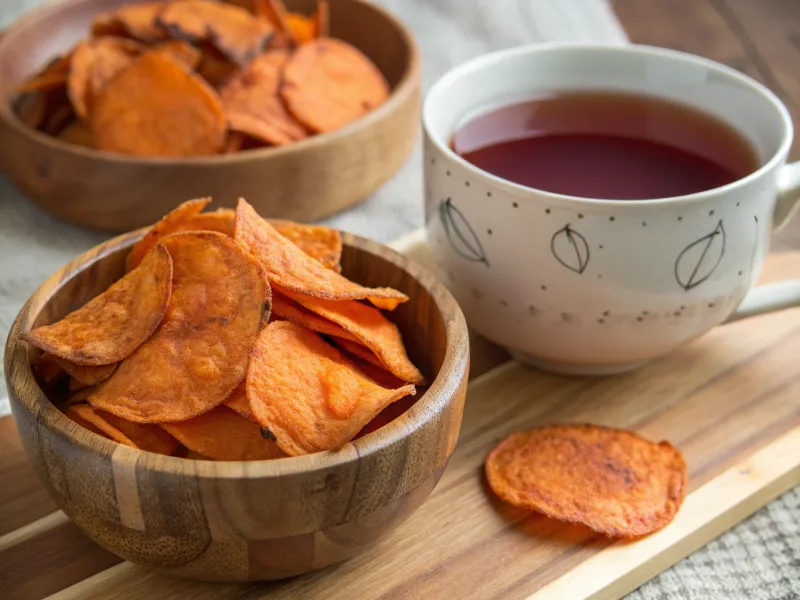
South African families have been enjoying this earthy combination for generations, especially during cold winter evenings. Sweet potato chips are orange, crispy slices that taste naturally sweet and slightly smoky. Rooibos tea is a reddish brown drink made from local bush leaves that tastes smooth and slightly nutty. The caffeine free tea helps you relax while munching on the sweet chips. Rural communities often prepare this pairing using ingredients grown in their own gardens and wild areas. The combination represents South Africa’s connection to indigenous plants and traditional farming methods that have sustained communities for centuries.
9. Banana Chips and Cardamom Tea from Sri Lanka
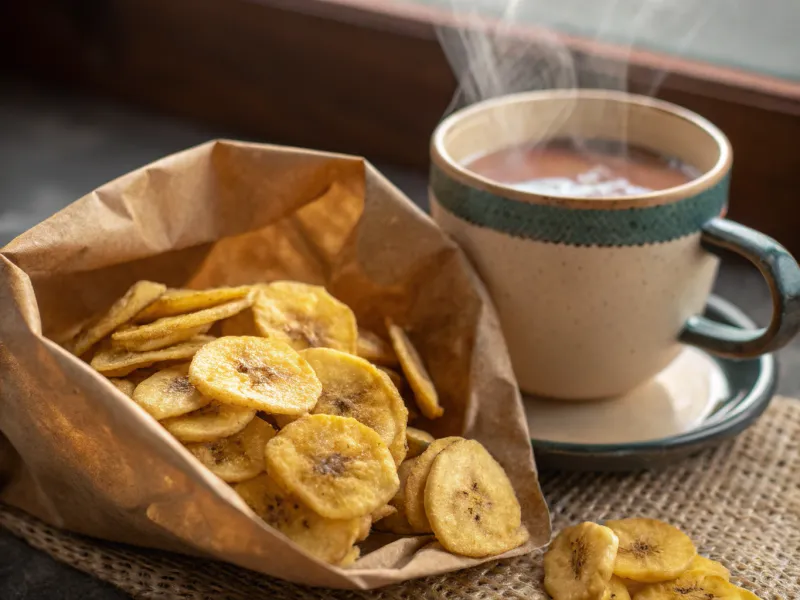
Sri Lankan tea plantations echo with workers enjoying this aromatic combination during their morning breaks. Banana chips are thin, golden rounds that taste sweet and slightly chewy, made from green bananas. Cardamom tea contains black tea leaves mixed with cardamom pods that give it a warm, spicy flavor. The hot tea helps bring out the natural sweetness in the banana chips. Tea plantation workers often pack this pairing in their lunch boxes because both items provide quick energy for physical work. The combination showcases Sri Lanka’s expertise in both tropical fruits and spice cultivation that makes the island famous.
10. Chickpea Chips and Rose Water from Iran
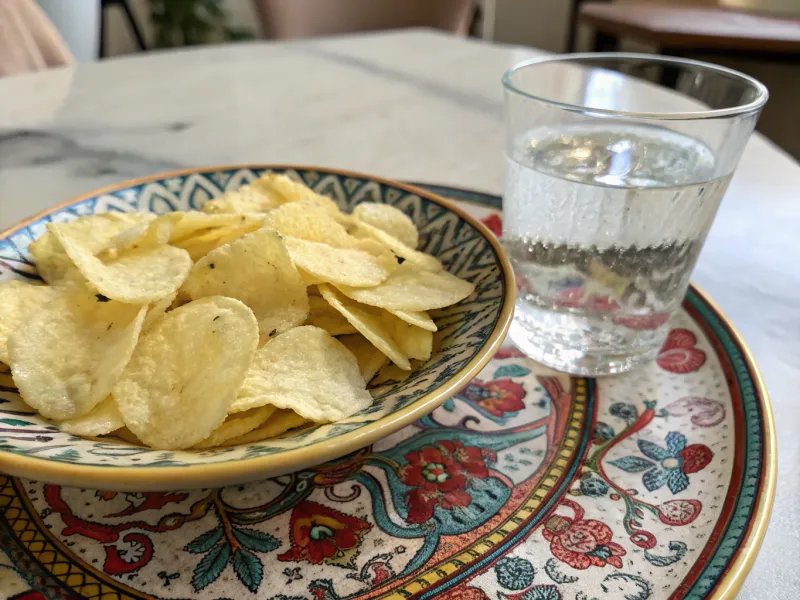
Persian gardens inspire this delicate combination that reflects Iran’s love for subtle flavors and beautiful presentation. Chickpea chips are pale yellow, crunchy pieces made from ground chickpeas that taste nutty and protein rich. Rose water is a clear, fragrant drink that tastes like liquid flowers and helps cool your throat. The floral flavor creates an elegant contrast to the earthy chickpea taste. Iranian families serve this pairing during afternoon visits with friends because it feels sophisticated and light. The combination shows how Iranians use flowers and legumes to make snacks that are both nutritious and culturally meaningful in their ancient traditions.
